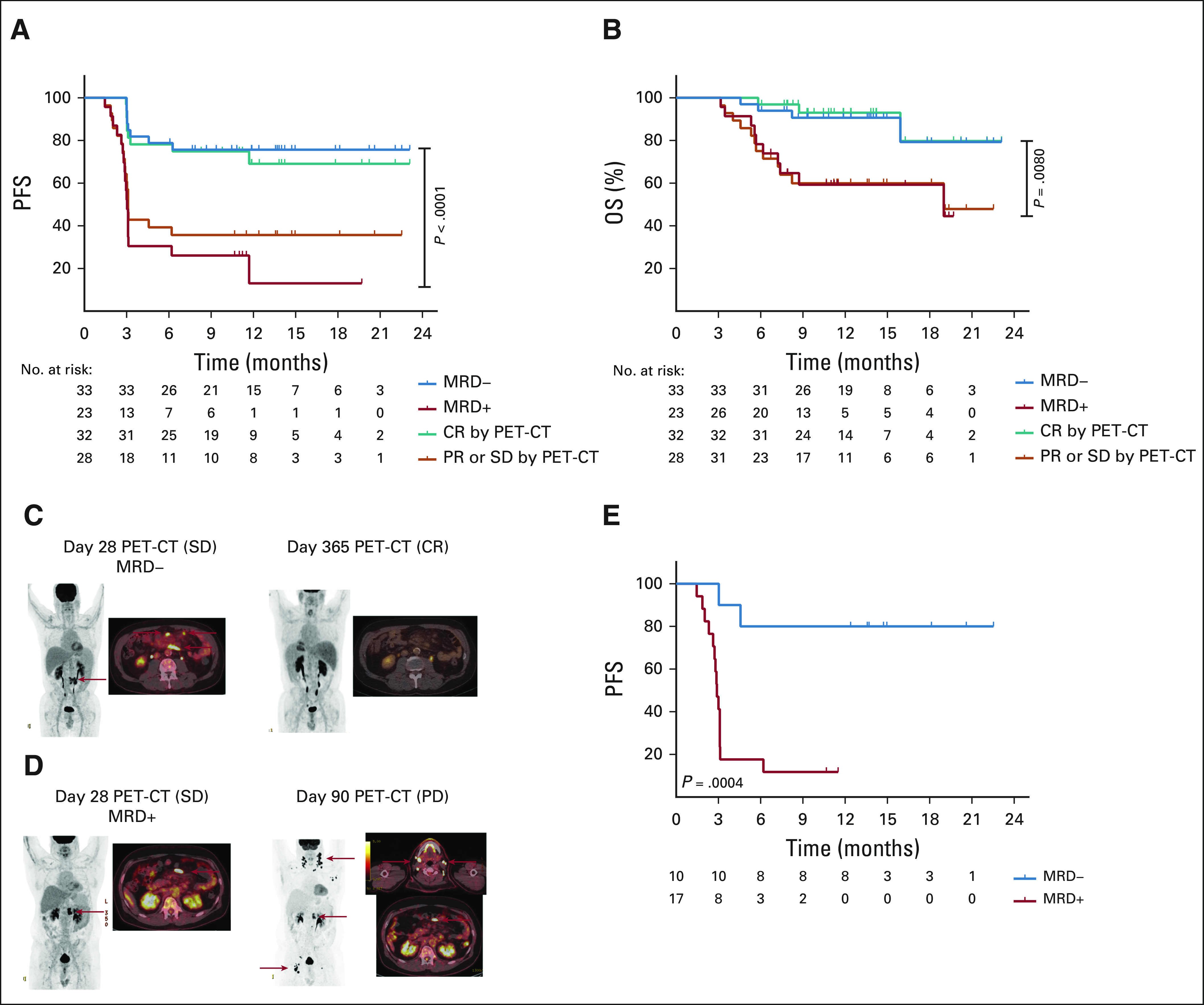FIG 4.

Outcomes on the basis of PET-CT and MRD status. (A) PFS and (B) OS on the basis of the MRD status on day 28, negative (blue) versus positive (red), and clinical status as determined by PET-CT imaging on day 28, CR (green) versus PR or SD (orange). Patients who were MRD− compared with those who were MRD+ had a longer median PFS of NR versus 3 months (P < .0001) and a longer median OS of NR versus 19 months (P = .0080). Patients who had FDG-avid disease on day 28 compared with those who achieved a CR had a median PFS of 3.1 months versus NR (P = .0018) and a median OS of 19 months versus NR (P = .0033). (C and D) Representative patients with SD as determined by the PET-CT on day 28 who are MRD− or MRD+ achieve a durable CR or relapse by day 90, respectively. (E) PFS from day 28 was examined by Kaplan-Meier analysis and log-rank test in patients with a SD or PR on day 28 by radiographic criteria, who were MRD− (blue) or MRD+ (red). Patients who were MRD− had a significantly longer PFS than those who were MRD+ with a median PFS of NR versus 2.9 months (P = .0004). CR, complete response; FDG, fluorodeoxyglucose; MRD, minimal residual disease; NR, not reached; OS, overall survival; PD, progressive disease; PET-CT, positron emission tomography-computed tomography; PFS, progression-free survival; PR, partial response; SD, stable disease.
